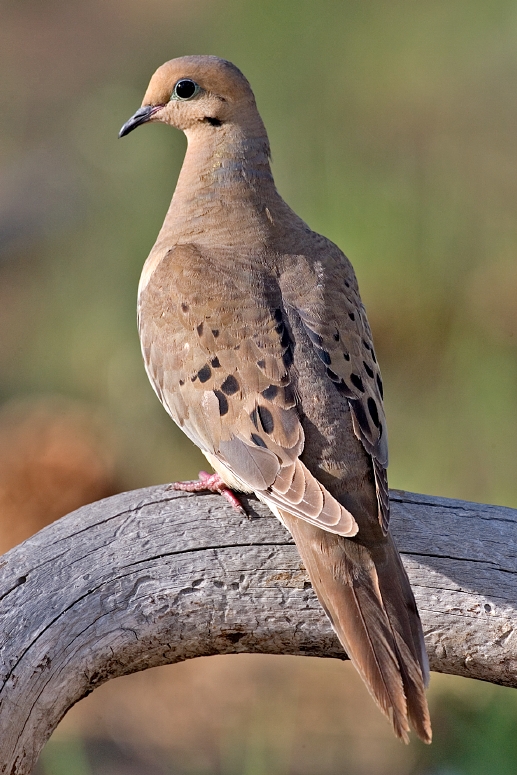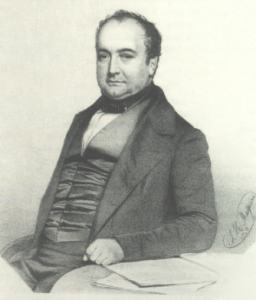MOURNING DOVES ARE AWESOME

This has been the worst day of my life, because my mate has been killed by a hunter. There were many trees around us that rustled in the wind. The trees bent down because of the wind, but it looked like they were also mourning. The grass waved its long blades in the air. The mourning dove hung from a tree branch stiffly, the hunter having forgotten to take her home with all the other birds he killed. In death, her eyes were closed with sadness and chest immobile. There were many beautiful gray speckled birds, our friends, mourning her death. As the trees and grass blew in the evening wind I felt as if the whole world stared with sadness.
While I sat a branch high in the tree, I noticed that her feathers were ruffled, and I realized that she perhaps had struggled in her death. I smiled with my eyes as I knew my feisty mate wouldn’t go down without a fight and that she possibly had given the hunter a few scratches to remember her by.
It is getting dark and most of my fellow mourning doves have left. I refuse to leave, even though it is starting to rain, stubbornly continuing to sit with her. I stay with her for what feels like 20 years and… I might have dozed off once or twice. Now it is midnight, and I look at the gleaming stars in the sky and I know that my mate is up in the endless sky: a cobweb of light made of hexagons going round and round. Then I smile: when my time comes, I will get to see her again. At that, I ready my falcon-like wings to depart.
***
I see mourning doves every day, at school and from my bedroom window. At my old blue house you could see mourning doves walking on the street—they had variety of shape, size and hue. Now, at my current house, I see mourning doves perched on telephone wires or on a tree. I think mourning doves are much prettier than pigeons. The mourning dove has a wonderful life, eating, mating and flying. 
This aerial fluffmonster has a small head, smaller than a pigeon’s, has graceful flying movements, and has a very sleek and slender tail. The Latin name for mourning dove is zenaida macroura—macroura meaning “large tail,” describing the bird. The zenaida in zenaida macroura has a short little story to it.  Charles Bonaparte was the son of Lucien Bonaparte and a nephew of Emperor Napoleon Bonaparte the First. In 1822, Charles married his cousin, Princess Zenaida. After he married Zenaida he started to get interested in ornithology, the study of birds. He then created the genus Zenaida, named after the love of his life for the mourning doves and all of its relatives. The mourning dove is also known as the Carolina pigeon or the Carolina turtle dove.
Charles Bonaparte was the son of Lucien Bonaparte and a nephew of Emperor Napoleon Bonaparte the First. In 1822, Charles married his cousin, Princess Zenaida. After he married Zenaida he started to get interested in ornithology, the study of birds. He then created the genus Zenaida, named after the love of his life for the mourning doves and all of its relatives. The mourning dove is also known as the Carolina pigeon or the Carolina turtle dove.
The mourning dove has a small delicate-looking bill and dull red legs and feet. The dove also has a blue eye on each side of its head and a long tail feather. Mourning doves are approximately 1 foot long with a wingspan of about 18 inches. The mourning dove’s weight is around 5 ounces.
Mourning doves sometimes eat berries and almost never eat animals or insects. They do occasionally eat snails, possibly to get calcium from their shells. Mourning doves perch on telephone wires and search for seeds on the ground. White millet, safflower and corn are the most common seeds mourning doves eat. When appearing to eat off the ground, they are actually stashing it for later digestion: they save the seeds in their crop, which is in the esophagus.
Mourning doves have an incredible ability to hydrate with water that is brackish, which means extra salty, and so the mourning dove can live for a while in the desert, and will fly really far to get to its favorite watering hole. In fact, they can sip, gargle and gulp water that is half as salty as ocean water.
Mourning dove incubation is a team sport: the male does the daytime shift and the female does the nighttime shift. If you are not there during the switch, it looks like the same bird has been on the nest the entire time. The nest is made of small branches, pine needles, and blades of grass, and is usually in trees. The nest is built by the female using the articles gathered by the male, usually located in a bush, tree, or on the ground. The bird will also nest in more unusual sites such as on cacti, ledges or in gutters, or it will reuse an abandoned nest. Both parents make a platform nest of twigs found from 5 to 25 feet up in a tree or shrub. Two beautiful, delicate, amazing eggs are laid in about 14 to 16 days. One egg is laid around noon and the second egg is laid in the morning on the next day. The baby mourning dove leaves the nest when he or she is 11 to 15 days old. When in incubation, corvids, grackles, house cats, or rat snakes will attempt to eat the mourning dove’s eggs. The adults, during mating season, show off in a tight formation, a trio in a dead straight line. Usually the dove that’s first, is the male of a couple. While the second bird in line is an unmated male bird trying to shoo an enemy from the land where he wants to nest, the last one is a female, mated to the bird that was first in line, and she just goes to enjoy the flight.
ledges or in gutters, or it will reuse an abandoned nest. Both parents make a platform nest of twigs found from 5 to 25 feet up in a tree or shrub. Two beautiful, delicate, amazing eggs are laid in about 14 to 16 days. One egg is laid around noon and the second egg is laid in the morning on the next day. The baby mourning dove leaves the nest when he or she is 11 to 15 days old. When in incubation, corvids, grackles, house cats, or rat snakes will attempt to eat the mourning dove’s eggs. The adults, during mating season, show off in a tight formation, a trio in a dead straight line. Usually the dove that’s first, is the male of a couple. While the second bird in line is an unmated male bird trying to shoo an enemy from the land where he wants to nest, the last one is a female, mated to the bird that was first in line, and she just goes to enjoy the flight.
Not many people know that a mourning dove is really fast. Their wing is long and pointed, resembling a falcon’s wing. A mourning dove can reach speeds of 55 mph, and because its wing is long and strong it makes it possible for the dove to stay in the air for a very long time. When taking off, their wings make a sharp whistling noise. 
The zenaida macroura are birds of peace and an admired backyard songbird. Sadly, some people use mourning doves as target practice or live targets, sometimes calling them “cheap skeets”. Their speedy flight makes them very hard targets – they are missed far more than they get hit by hunters. The main danger to the mourning dove is intense hunting. Forty-two states allow birds to be hunted, and it is the most popular hunted bird in North America; at least 20 million birds are killed each year. Luckily, this amazing dove population turns out to be resilient to heavy hunting pressure. It still is one of the most abundant and widespread birds in North America. Hunters kill more mourning doves then any animal in the country; even birds of prey join in the fray, dive-bombing out of the sky to devour these harmless creatures.
Our lovely harmless, yet swift friends, coo. The mourning doves’ coo might sound sad, but bird watchers know that it means a dove is making its nest, claiming its area, and raising young. The song of the mourning dove is a soft, sad sounding “coo-oo”, then two or three louder coos: “coo-oo, oo, oo oo’’. You will probably hear this from a mourning dove who has not mated and the cooing will go on and on from a perch. Female mourning doves make a soft sound “ohr ohr” when sitting on the nest.
Except for wetlands and wet forests, mourning doves can be found anywhere. These doves live in open lands, like grasslands, prairies, farms, urban areas and sometimes in woods with sparse trees. The dove tries to avoid swamps and thick forests. This fine flier has also adapted to human-populated areas. Mourning doves are one of the most common and adaptable birds in North America. In the chilly cold winters, you might just see a mourning dove because it didn’t want to migrate for there was still valuable yummy food and the dove did not want it to let it go to waste.
Mourning doves are amazing creatures from nature, so the next time you walk out of your house early in the day, look around, and I bet you might just find a good mourning dove!

